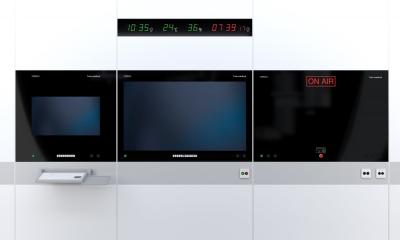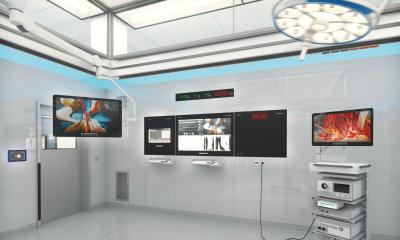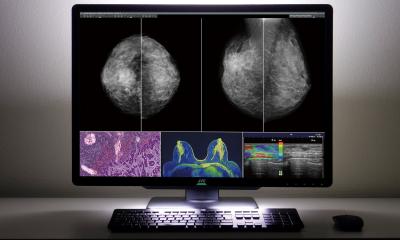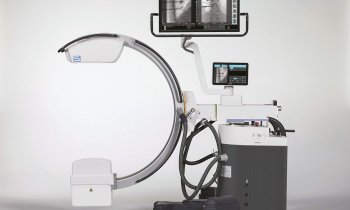Semiconductors
Semiconductor technology plays an important role in improving aspects of healthcare by making medical electronic devices more flexible, affordable and accessible
During the Forum MedTech Pharma (30 June to 1 July, Nuremberg, Germany)Texas Instruments discusses the impact of semiconductor innovation on the development of medical equipment. ‘As an integrated circuit (IC) provider we sell both analogue and digital solutions to system houses, which then integrate the product,’ explained Dr Karthik Vasanth, Medical Business Unit Product Line Manager at Texas Instruments, during an interview with Daniela Zimmermann (EH).

Our customers put their intellectual property and their know-how into the product. Similarly, we sell semi-conductor devices for cell phone applications, but we don’t sell the final product.
‘We don’t influence the market directly. But we do work very closely with our customers, who do influence the market. They have very specific requirements, so that they can make products that change the medical market. A very good example would be a portable ultrasound system -- typically in a hospital, you have very large ultrasound machines, but now companies can make portable systems because we provide them with semi-conductors that are very small and very efficient. To be able to do this we talk to our customers to understand their market and then we design our chips to help them to succeed in that market.’
It’s the semi-conductors not the technology that are driving innovation in the market, added Daniela Koeppe, Medical Communications Manager at Texas Instruments. ‘They enable devices to be connected, to be more portable and have lower power, and so on. So, we do influence the market through this. Our customers have the final product, but it’s our technology that’s driving innovation. We need to understand the needs of the end users. A doctor who uses an ultrasound machine needs to understand the technology that’s in the device. We try to educate the people who work in a hospital environment to make sure they have an easier time to adopt innovations. We don’t go out to hospitals directly but we use public opportunities to talk about what semi-conductor innovation can do in this market.’ Hence the forthcoming Texas Instruments talk in Nuremburg.
About three years ago, Dr Vasanth continued, the firm saw that electronic medical devices could become a very large market. ‘So, we redefined how we can tie into the medical space.’
Small portable medical devices
The portability of medical electronic devices is highly desirable and this requires lower power and smaller size. ‘To enable these new form factors while maintaining excellent performance, semiconductor technology is required to integrate the same functions into fewer components, which not only reduces the system size, but also the power consumption,’ Dr Vasanth explained. ‘The miniaturisation required to make this possible is due to the availability of high performance analogue and digital integrated circuits that provide excellent performance with low power and smaller area footprints. Over the last five years integrated circuits in certain areas (this is not a global statement) have shrunk in size by more than a factor of four, consume half the power and have better performance when compared to older technologies.’
Telehealth and home care
Another trend that semiconductor innovation accelerates is the ability to couple imaging modalities, such as ultrasound, with basic patient monitoring devices and telecom connectivity, thus enabling the development of telehealth applications. ‘We are talking about the basic innovation in IC technology that enables these products to be made,’ Dr Vasanth pointed out. ‘What we are seeing are ultrasound, or ECG, or blood pressure machines that can all talk to let’s say a hand-held unit, which can transmit the image to some satellite or processing unit of a big hospital in a metropolitan area. The cell phone can actually become a platform for communication devices. You just have to make sure that the medical devices have communication capabilities to communicate with the cell phone. So, home care is one of the markets we are looking at.
‘But we are also talking about how low power Bluetooth chips can communicate seamlessly with a cell phone, which then becomes the gateway to the world. We also talk about telehealth in an emerging economy, or patient monitoring in all the existing developed countries.’
Enhancing a healthy lifestyle
In addition, TI is exploring how consumer health and wellness devices might be enhanced by semiconductor innovation, notably by power reduction and integration. Single, highly integrated semiconductor chips can already measure, compute, display and transmit vital signs. ‘As we reduce the power consumption of these applications we can enable continuous monitoring rather than spot checks. This technology, along with trendy applications, allows for new and innovative methods in personal healthcare. People can carry a device to monitor their pulse rate, or a device on the body that tells you precisely how many calories you are burning and how your blood pressure varies in the course of the day,’ Daniela Koeppe added. ‘Such applications could be integrated into a mobile phone, or pedometer, or in any type of equipment customers manufacture, ‘You can not only connect this to a cell phone but also to a PC via a USB port, and then you can monitor your daily progress and even compete virtually with other people around the world -- let’s say on your jogging trips or during cycling races.’
Implantable monitors
Implantable devices have benefited hugely from miniaturisation, taking them far beyond their original role as aids to help cardiovascular patients. Daniela Koeppe referred to implantable devices to manage pain and others for nerve and deep brain stimulation. ‘This is a little bit further out, but such miniaturisation is definitely coming.’
Naturally, in terms of medical implants, the smaller the device the better. ‘Yes, miniaturise -- but also drive the power down, because these devices need to work for a long time on a battery with no replacement.’
So, another challenge for Texas Instruments, a name almost synonymous with miniaturisation, but the company still aims to go further, by surmounting size and power obstacles that stand in the way of electronic progress.
Texas Instruments Inc.
Over 75 years ago, when Texas Instruments began as a company in the oil fields of Texas, no one could have foreseen the firm’s immense impact on the way the world would run today. 52 years ago, engineer Jack Kilby joined the team and, in that same year, conceived and built the first electronic circuit in which all the components, both active and passive, were fabricated in a single piece of semiconductor material half the size of a paper clip. He received the Nobel Prize for Physics. That early micro-chip made mass production possible and ultimately enabled the Internet, PCs, cell phones and so much of what we now take for granted.
TI’s engineers, who also produced the first commercial silicon transistor and first electronic hand-held calculator, continue to lead the way in digital signal processing and analogue technologies -- the semiconductor engines that drive our electronic age.
Along with R&D in a broad range of electronic areas, Texas Instruments components are instrumental in the development of medical devices that are changing the way healthcare is delivered.
Today, the integrated circuits global market is worth around US$2.50-3.0 billion annually.
07.07.2010










